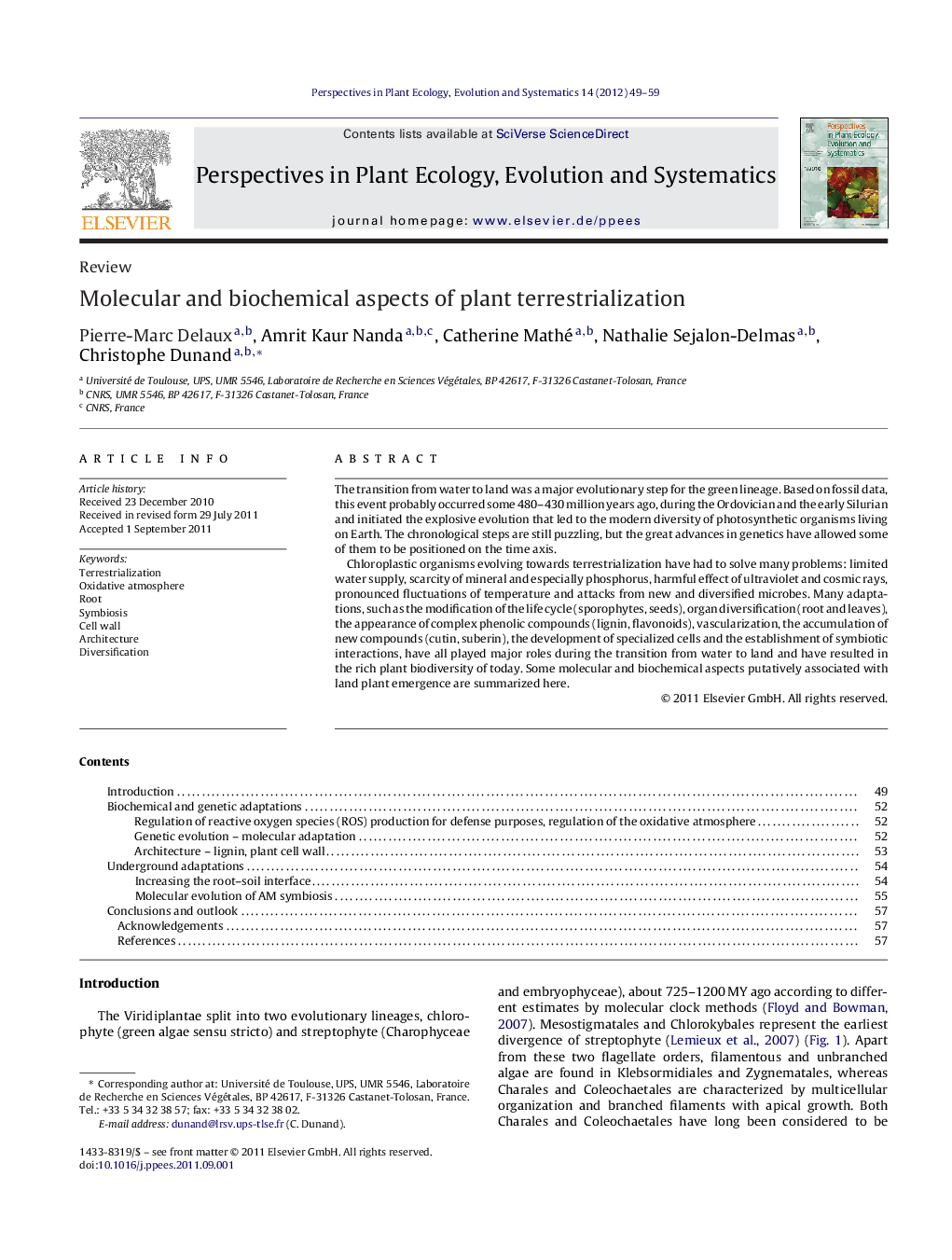| Article ID | Journal | Published Year | Pages | File Type |
|---|---|---|---|---|
| 4401104 | Perspectives in Plant Ecology, Evolution and Systematics | 2012 | 11 Pages |
The transition from water to land was a major evolutionary step for the green lineage. Based on fossil data, this event probably occurred some 480–430 million years ago, during the Ordovician and the early Silurian and initiated the explosive evolution that led to the modern diversity of photosynthetic organisms living on Earth. The chronological steps are still puzzling, but the great advances in genetics have allowed some of them to be positioned on the time axis.Chloroplastic organisms evolving towards terrestrialization have had to solve many problems: limited water supply, scarcity of mineral and especially phosphorus, harmful effect of ultraviolet and cosmic rays, pronounced fluctuations of temperature and attacks from new and diversified microbes. Many adaptations, such as the modification of the life cycle (sporophytes, seeds), organ diversification (root and leaves), the appearance of complex phenolic compounds (lignin, flavonoids), vascularization, the accumulation of new compounds (cutin, suberin), the development of specialized cells and the establishment of symbiotic interactions, have all played major roles during the transition from water to land and have resulted in the rich plant biodiversity of today. Some molecular and biochemical aspects putatively associated with land plant emergence are summarized here.
